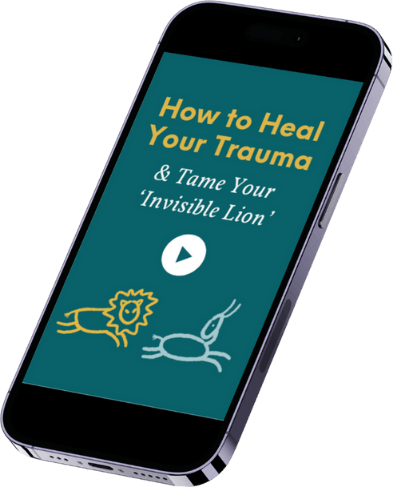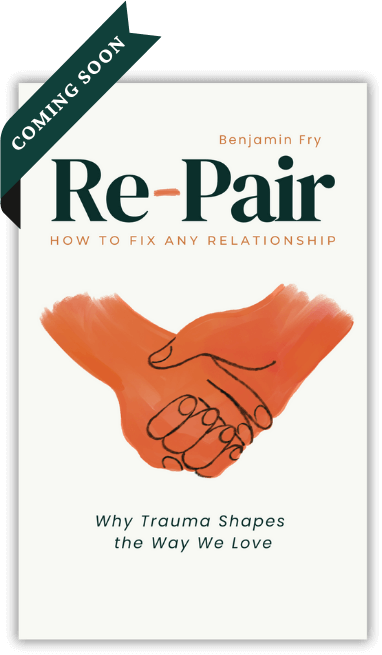Blog #18
In general, individuals who have not finished responding (see unfinished business) to an earlier threat in life are left with baggage in their nervous system. This either speeds them up or slows them down, leading to them over- or under-reacting to new stimuli in life, which we sometimes call triggers if they lead to one of these out-of-scale reactions. Sometimes, however, we get it just right, and so we have three basic ways of reacting to a stimulus, or trigger. We can draw these three different ways of reacting as three different diagrams like below. The red squiggle represents your baggage, the green arrow is a trigger, and the red arrow is your output, or reaction.
Overreaction:

Under-reaction: (In this diagram, the box represents little to no reaction, where the energy is instead internalised.)

Just right, or Goldilocks reaction:

If we go with the idea that any one person can be represented by any one of these diagrams, then we can begin to build a picture of the kinds of relationships we have in life. These can be romantic relationships, or any type of relationship; family, friends, colleagues. We sometimes find that the dynamics discussed here are most noticeable or extreme in romantic relationships, so that’s a good focus to illustrate the points, but the analysis works for everyone.
If you have three kinds of people, then you can have six kinds of relationships.. We are going to look at each in turn and you can see if you recognise yourself, or others, on either side of these relationships.
Under-reaction with an under-reaction
I want you to imagine the people represented in the diagram above standing next to each other. Let’s take two under-reacting types of people and place them on the page together. Then I want you to imagine that you are going to turn them into an animated cartoon. What happens to those arrows? How would the cartoon develop over time? What would get bigger and what would get smaller?

When I look at this, I see nothing happening at all. You can lob as much trigger as you like at each of these people and they will react, at least to the outside world, as if they don’t notice. Inside they are working very hard to keep those solid black walls rigidly in place lest any squeak of their powerful reactions escape, but to you and me they just seem distant, uninvolved, maybe even cold.
The next stage in your imaginary animation is for you to allow both of these people to move left to right on the page. Which direction do you think they would both like to go in? they start off comfortable sitting next to each other, but then as the energy in their reactions escalates, where do they go?
There is no connection here, no interaction. Therefore, I see no glue holding them together. I imagine them just as likely to drift slowly apart as they are to stay still or to bump together, like two water droplets in space, they could go anywhere, and it is unimportant to each of them what happens.
Of course, on the inside, a lot is still happening, but that’s not going to be noticed or noticeable. These are the kinds of relationships that just drift apart. Family members, friends, lovers, even spouses, that you just lose but can’t really remember when or why or how. There’s no dynamic, so life takes over. The softest of breezes can blow you apart.
Does this remind you of anyone?
Many work relationships are like this, because we believe that we are supposed to be a certain way at work and so offering a window into our deeper reactions to things is taboo. But equally many families and even cultures are the same. I write this from modern Britain where it is much less familiar for someone of my age to emote than in, say, America. So, isolation becomes more of a problem and easier to drift into.
It’s also a popular version of marriage too! So often communication becomes difficult in maturing relationships because the same arguments happen so often that in the end each party gives up on them. In effect they become so overwhelmed by their growing over-reaction that they graduate into an under-reaction. There they then get stuck, and where there used to be at least a proxy for passion, there is now only the relationship graveyard of resentment. Nothing is said anymore, and the walls get thicker. As a result, the glue is gone and relationships drift.
Many people can survive in relationships like this, both at work and at home, forever. There is little obvious trouble. There is no violence, no shouting, no destruction. But the effect on the nervous system is equally uninspiring. Recovery and growth require movement. Nervous systems discharge when they heal. Emotion is normal. Connection is facilitating. So putting up with this kind of relationship life isn’t optimal for any aspect of health.
We need to move out of these places and develop strategies for simulating better functioning nervous systems in relationships. This is particularly important and possible when we are shut down. We don’t have to fake it for too long until our bodies learn that it is safe to make it. Adults are safer than we think!
You can download this post in a handy 2-page PDF to print and share with friends, family, clients or colleagues. Follow this link to download now.
You can buy a copy of The Invisible Lion now on kindle or paperback from your local Amazon store. Just click here to buy now.






